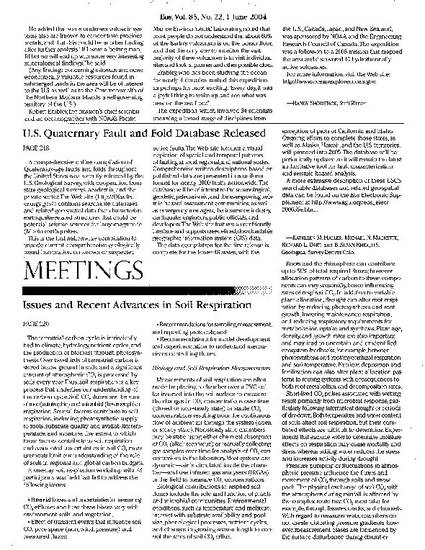
Article
Issues and recent advances in soil respiration
Eos, Transactions American Geophysical Union
Document Type
Article
Disciplines
Publication Version
Published Version
Publication Date
6-1-2004
DOI
10.1029/2004EO220009
Abstract
The terrestrial carbon cycle is intrinsically tied to climate, hydrology, nutrient cycles, and the production of biomass through photosynthesis. Over two-thirds of terrestrial carbon is stored below ground in soils, and a significant amount of atmospheric CO2 is processed by soils every year.Thus, soil respiration is a key process that underlies our understanding of the carbon cycle. Soil CO2 fluxes are the sum of root (autotrophic) and microbial (heterotrophic) respiration. Several factors contribute to soil respiration, including photosynthetic supply to roots, substrate quality and availability, temperature, and moisture.
Rights
Works produced by employees of the U.S. Government as part of their official duties are not copyrighted within the U.S. The content of this document is not copyrighted.
Language
en
File Format
application/pdf
Citation Information
K. A. Hibbard, B. E. Law, M. G. Ryan and Eugene S. Takle. "Issues and recent advances in soil respiration" Eos, Transactions American Geophysical Union Vol. 85 Iss. 22 (2004) p. 220 - 220 Available at: http://works.bepress.com/eugene-takle/81/

This article is published as Hibbard, K. A., B. E. Law, M. G. Ryan, and E. S. Takle. "Issues and recent advances in soil respiration." Eos, Transactions American Geophysical Union85, no. 22 (2004): 220-220. DOI:10.1029/2004EO220009. Posted with permission.